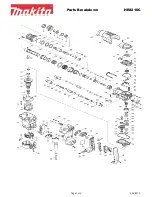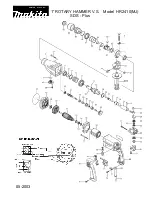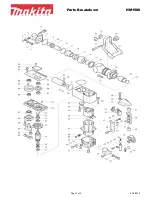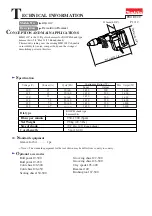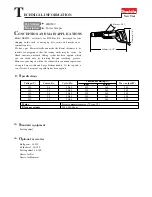
Pg.27
-28-
Model G0834 (Mfd. Since 12/17)
Rabbet Cutting
Removed
Surface
Rabbet Joints
Figure 28.
Example photo of typical rabbet cut-
ting operation.
To rabbet cut on jointer:
1.
Inspect stock to ensure it is safe and suitable
for the operation
(see
Stock Inspection &
Requirements
section).
2.
Set infeed table height to desired cutting
depth for each pass.
CAUTION:
For safety reasons, cutting
depth should never exceed
1
⁄
8
" per pass.
8.
Repeat
Step 7
until rabbet is cut to depth.
9.
Re-install cutterhead guard if removed in
Step 3
.
7.
Feed workpiece completely across cutter-
head while keeping it firmly against fence
and tables during entire cut.
CAUTION:
Keep hands at least 4" away
from cutterhead during the entire cut. Instead
of allowing a hand to pass directly over cut-
terhead, lift it up and over cutterhead, and
safely reposition it on the outfeed side to con-
tinue supporting workpiece. Use push blocks
whenever practical to further reduce risk of
accidental hand contact with cutterhead.
3.
Remove cutterhead guard if necessary to per-
form operation (see
Figures
below.)
4.
Set fence to 90° and near front of jointer,
so amount of exposed cutterhead in front of
fence matches size of desired rabbet.
5.
Start jointer.
6.
Place workpiece firmly against fence and
infeed table.
CAUTION:
To ensure workpiece remains
stable during cut, concave sides of workpiece
must face toward table and fence.
NOTICE
If you are not experienced with a jointer,
set depth of cut to 0", and practice feeding
workpiece across tables as described. This
will help you prepare for actual operations.
The purpose of rabbet cutting is to remove a sec-
tion of the workpiece edge (see example
Figures
below). When combined with another rabbet cut
edge, the rabbet joints create a simple, yet strong
method of joining stock.
When cutterhead guard is removed,
attempting any other cut besides a rabbet
directly exposes operator to moving cutter-
head. To minimize risk of injury and unnec-
essary exposure to cutterhead, always
keep cutterhead guard installed when pos-
sible, and ALWAYS immediately replace it
after performing rabbet cuts.

































